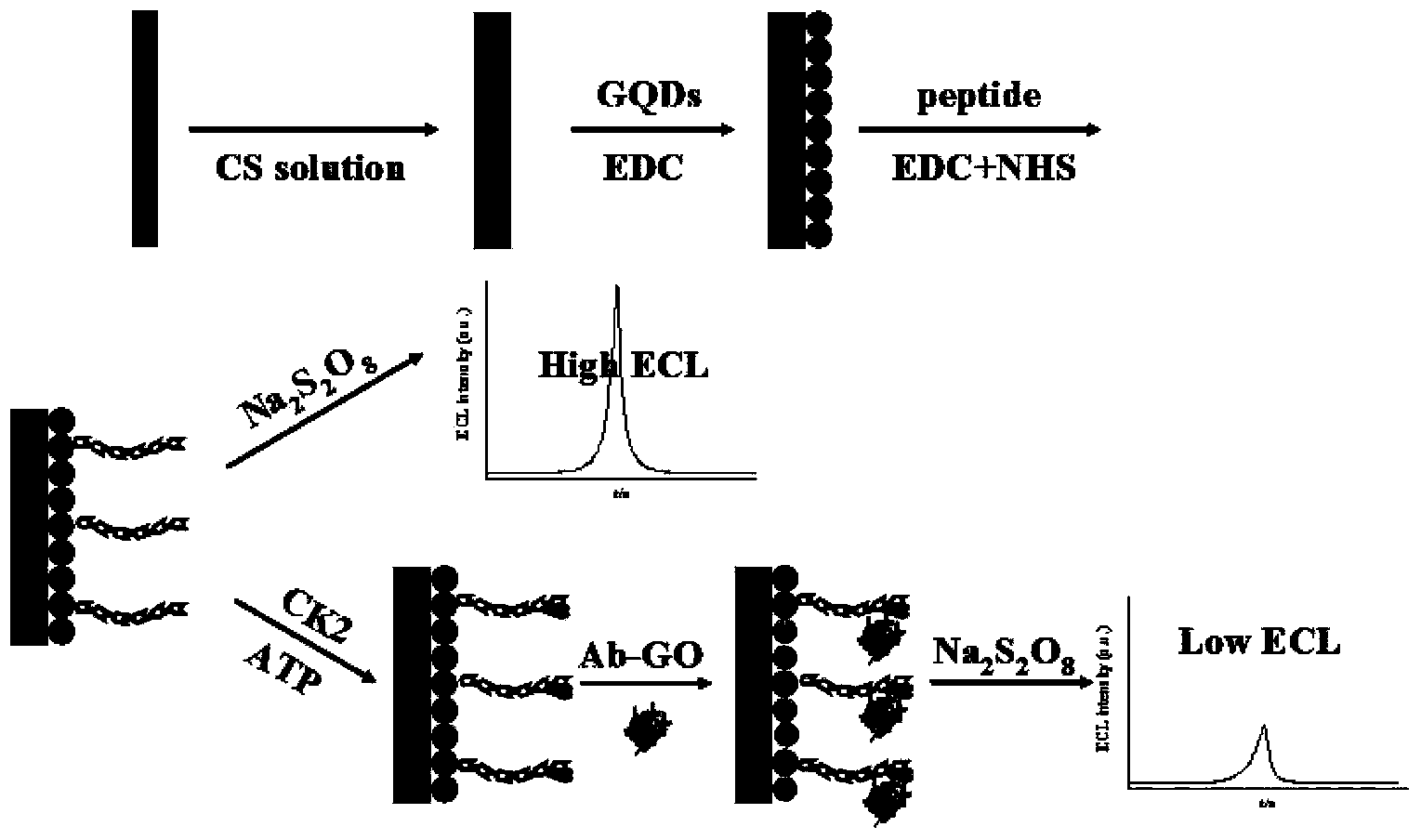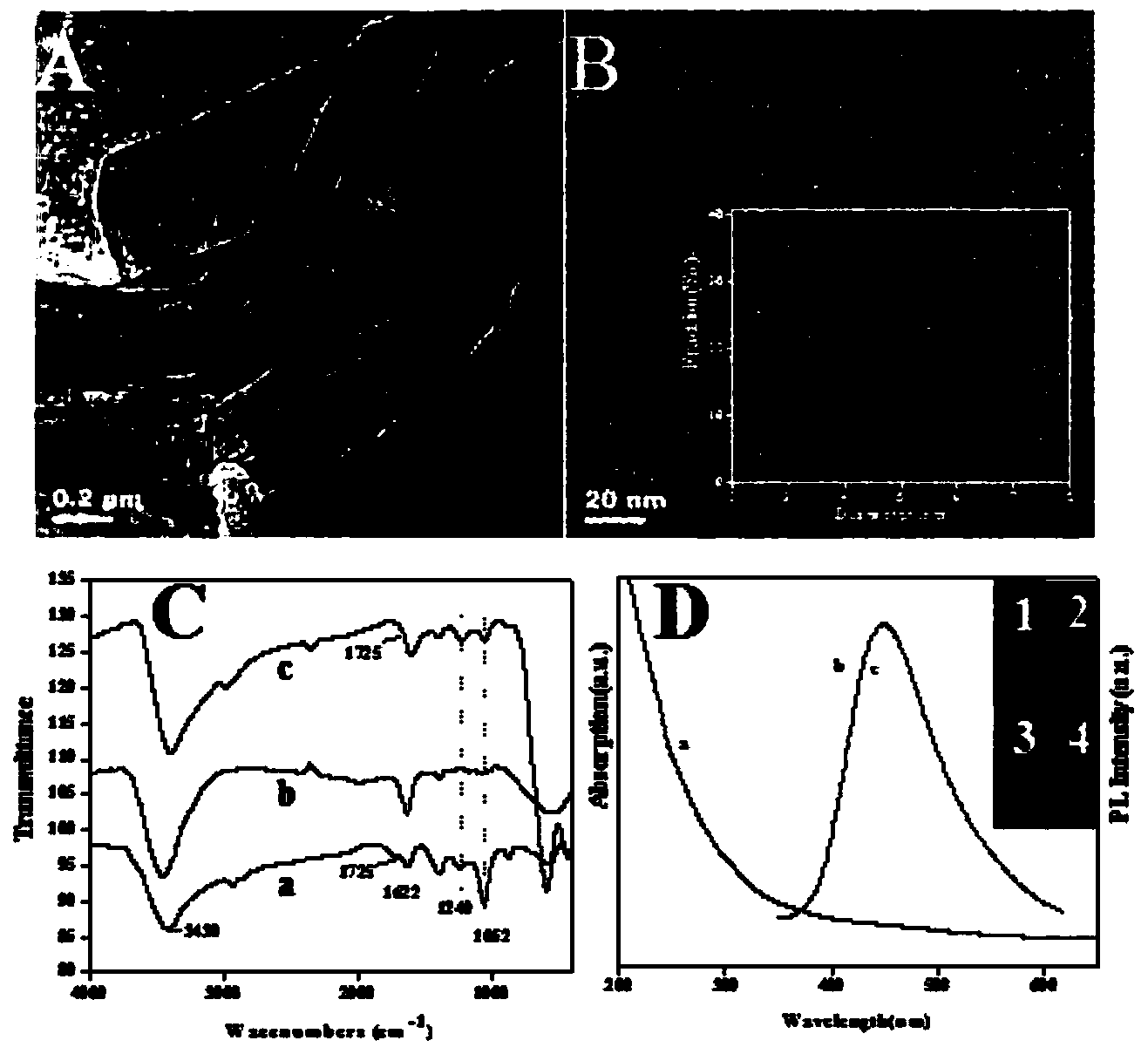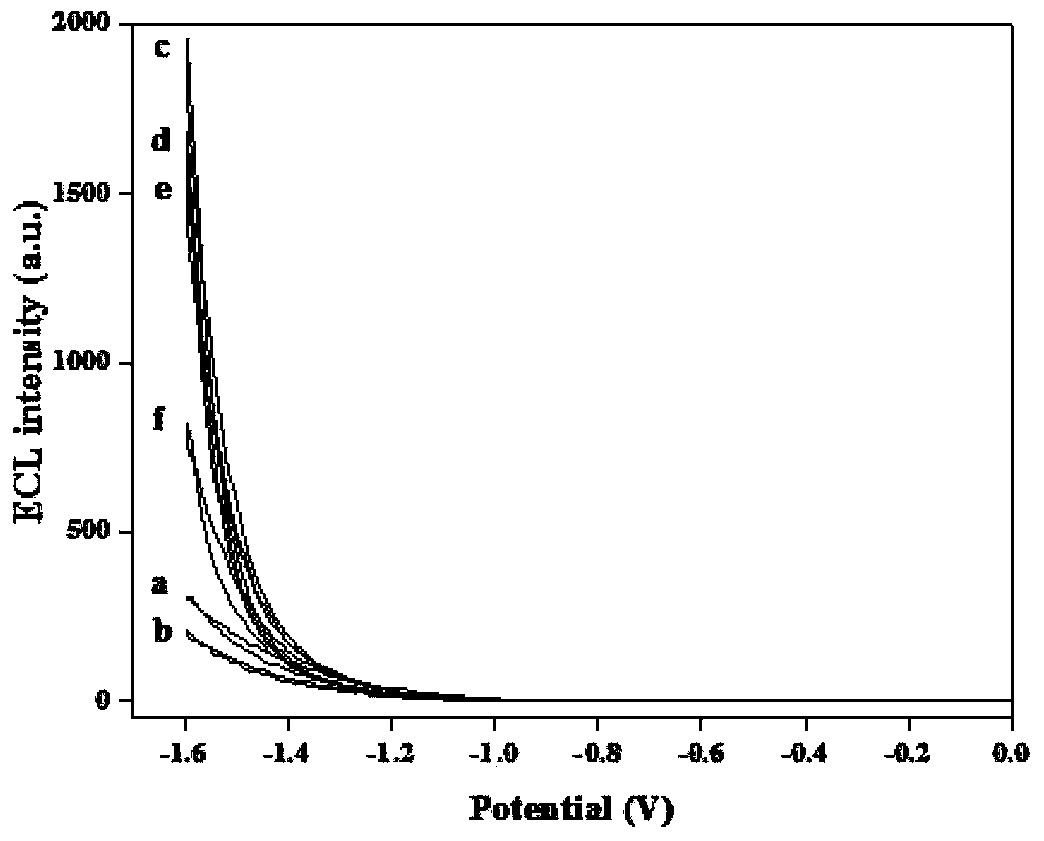Sensor preparation method based on ECL-RET action between GO and GQDs and application on kinas detection
A sensor and action technology, applied in chemical instruments and methods, analysis by chemical reaction of materials, inorganic chemistry, etc., can solve the problem of less research and application of GQDs, and achieve high sensitivity, good stability, and low detection limit. Effect
- Summary
- Abstract
- Description
- Claims
- Application Information
AI Technical Summary
Problems solved by technology
Method used
Image
Examples
Embodiment 1
[0021] (1) GO was prepared by the Hummers method: 1.0 g graphite and 1.0 g NaNO 3 Added to 46 mL of 98% H 2 SO 4 , add 6.0 g KMnO slowly under ice bath 4 , stirred in a water bath at 35 °C for 1 h, added 80 mL of ultrapure water, continued to stir for 30 min, and then added 200 mL of ultrapure water, then added 6 mL of 30% H 2 o 2 , react at room temperature for 1 h; filter the product while it is hot and wash it with ultrapure water until the filtrate is neutral, disperse the product in 500 mL ultrapure water, and sonicate for 2 h to obtain uniformly dispersed GO;
[0022] (2) Preparation of GQDs by hydrothermal method: the dried GO was placed in a tube furnace under N 2Under the condition of protection, be heated to 200 ° C with the heating rate of 5 ° C / min and keep 2 h, obtain graphene sheet; 0.05 g graphene sheet is added to the concentrated sulfuric acid that volume ratio is 1:3:Concentrated nitric acid Sonicate in the mixed solution for 17 h, in which the mass perc...
Embodiment 2
[0029] Preparation process of ECL biosensor
[0030] (1) Pretreatment of the glassy carbon electrode: Before the glassy carbon electrode is modified, the α-Al 2 o 3 Polish in the paste, and then ultrasonically clean with ethanol and water for 1 min;
[0031] (2) The preparation process of ECL biosensor is as follows: figure 1 shown. 10 μL of chitosan solution with a mass percent concentration of 0.5% was drop-coated on the surface of the glassy carbon electrode and dried, then the electrode was immersed in the GQDs-COOH solution containing 5 mM EDC, and incubated at room temperature for 5 h; After washing with 10 mM, pH 7.4 PBS buffer solution, insert the electrode into a solution containing 5 mM EDC, 8 mM NHS and 50 μM peptide for 3 h; then insert the electrode into Tris buffer containing CK2 and ATP React in the solution for 2 h to phosphorylate the polypeptide; incubate the phosphorylated polypeptide modified electrode in the Ab-GO solution for 1 h to prepare the ECL se...
Embodiment 3
[0036] ECL biosensor for detection of CK2
[0037] Under optimal experimental conditions, the ECL biosensor constructed using the ECL-RET interaction between GO and GQDs detected CK2 activity. Depend on Figure 6 A shows that with the increase of CK2 concentration, the ECL signal of GQDs gradually decreased, and when the CK2 concentration was 30 U / mL, the ECL intensity reached the maximum. Figure 6 B is the standard curve for CK2 detection. When the CK2 concentration is 0.05-5 U / mL, the CK2 concentration has a good linear relationship with the ECL signal. The linear equation is I = 1621.6 - 142.7c (I is the ECL intensity, c is the CK2 concentration) , and the detection limit was 0.023 U / mL. The detection limit of the method is lower than that of the electrochemical method and the fluorescence method, and the linear range is wider, indicating that the ECL sensor proposed by the invention can detect kinase activity with high sensitivity.
[0038] in the presence of 0.1 M Na ...
PUM
| Property | Measurement | Unit |
|---|---|---|
| Particle size | aaaaa | aaaaa |
| Half inhibitory concentration | aaaaa | aaaaa |
Abstract
Description
Claims
Application Information
 Login to View More
Login to View More - R&D
- Intellectual Property
- Life Sciences
- Materials
- Tech Scout
- Unparalleled Data Quality
- Higher Quality Content
- 60% Fewer Hallucinations
Browse by: Latest US Patents, China's latest patents, Technical Efficacy Thesaurus, Application Domain, Technology Topic, Popular Technical Reports.
© 2025 PatSnap. All rights reserved.Legal|Privacy policy|Modern Slavery Act Transparency Statement|Sitemap|About US| Contact US: help@patsnap.com



